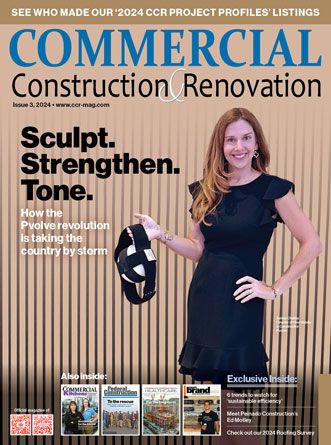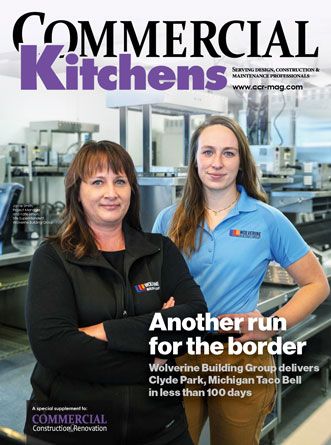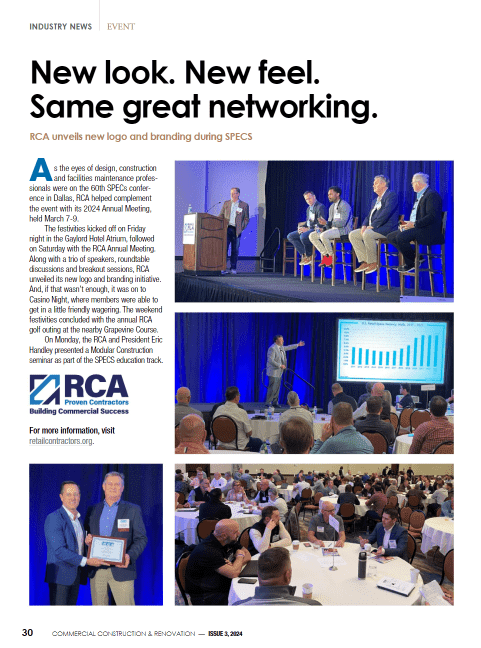If you have an ecommerce store and you’re looking to increase conversions, build your brand, or attract new customers, I have one word for you: videos. But you can’t just film your product willy-nilly, post the video, and expect big results. You need to build a marketing strategy for your ecommerce videos.
So let’s discuss why you should be using video, how to use it, and ways to improve the videos themselves.
Why Product Videos?
The effectiveness and popularity of video really come down to just one thing. It’s easy. Watching a video is easier than reading a detailed product description.
If you study trends, you’ll see that video use continues to increase every year. According to a study by emarketer.com, most adults watch about 5.5 hours of video a day.
It’s also usually faster to watch a video because a 30-second video conveys far more information than 30 seconds of reading. Remember the old saying, “A picture is worth a thousand words?” Well, a video is more like ten-thousand.
Search Engine Results
There’s another very practical reason to use videos on your store site: Google plays favorites. Pages tend to rank higher in search results if they are a video or include video.
Search Engine Watch reported that after Google updated its algorithm Panda, “YouTube was the biggest winner, according to Searchmetrics, as were a number of big brand video sites – Hulu, MTV, NBC, CBS, HBO and a number of others that contain a large amount of video content.”
So if you’re hoping ecommerce customers can search for you and find you, product videos are a must.
Product Videos Mean Higher Conversion Rates
Here’s another statistic to consider: customers are 64-85% more likely to buy a product after watching a video (kissmetrics.com). That means you’ll see fewer abandoned carts if you utilize video on your product page.
To understand why video helps more customers pull the trigger, get into the mindset of your customer. Online shoppers have three main concerns according to a 2017 study by “big 4” audit firm KPMG. The first concern is that 56% of customers want to see or feel the product before purchasing. The second concern is that 55% want to try on the item. And the final most common concern is the product will look different in real life than in the online images (41%).
A Better Shopping Experience
Those three concerns all center around what makes an ecommerce experience different than shopping in a physical store–the customer cannot see, hold, touch, or try the product before purchase. Product videos are the way customers do those things vicariously.
For instance, instead of a still image of shorts against a white background, a video lets the customer see the shorts on a model from all angles–just like a shopper would do in a dressing room mirror. Retailer Old Navy uses video to bridge the gap between online shopping and brick and mortar shopping.
And if you’ve noticed Old Navy ads, they are full of action–so the customer can see the product in motion. This lets customers imagine how the clothing would function on their bodies as they sit, work, walk, and even dance.
https://youtu.be/K3pcLOH0iwM
As ecommerce becomes more prevalent, the websites that will stand out from the rest are the ones that give customers the most thorough shopping experience. Think about shopping online ten years ago versus today. Ten years ago, some shopping sites didn’t even show the backs of products. Just one or two images were all a shopper saw. Today, customers expect to see all angles of a product, any color options (on the product–not just tiny swatches), and be able to zoom in on the picture to see details.
In the future, ecommerce customers will demand more product videos, and they will become as commonplace as still images are now.
Other Eccomerce Benefits of Video
Hoping to reduce the number of product returns? Because product videos tell a more complete product story, customers know what to expect when the product arrives at their doorstep. You’ll have fewer returns and complaints as a result.
And speaking of having fewer complaints, a customer whose purchase is “as expected” is a happy customer. Those customers will trust you because they know you represent your products truthfully and they’ll buy from you again. That brand loyalty will lead to big gains in the future.
Creating A 30 Second Video Marketing Plan
Now that I’ve revealed why video is so important to ecommerce, let’s discuss the ways you can use 30 seconds of video to attract new customers, build your brand, and nurture customer relationships.
Attract New Customers
The first use of video is to attract new customers. With a limited budget, you’ll typically place videos on Facebook and Instagram. (With an unlimited budget, you can branch out into television).
Facebook and Instagram are both visual platforms, so video ads are especially successful there. Social media users are already programmed to click and watch the videos their friends share and post, so watching your video is a natural continuation of that same behavior. If your video is amazing, it may even get shared organically or go viral.
Blendtec hit product video gold with its “Will It Blend?” video series. When the company started up, its marketing budget was minimal. But as the story goes, one day Blendtec’s marketer saw the Blendtec inventor, Tom Dickson, chopping up various items in the blender to test its power. As soon as the marketer saw it, he knew he had his marketing strategy.
Sure enough, the videos went viral, and Blendtec became synonymous with power and durability in the minds of consumers. Here’s an example of Blendtec grinding 50 marbles into dust:
Ecommerce Videos and Social Media
Even without going viral, videos on social media can attract many new customers to your product and store. Facebook uses pixel technology to gather information about your customers, following them from the first view to click through to purchase. The pixel then utilizes that data to better target potential customers. In other words, as you run ads, Facebook will narrow the target audience and show the video to the customers most likely to purchase–which means you’ll see a much better ROAS (return on ad spend).
But it’s important to know that it takes time for the Facebook pixel to optimize. There will be highs and lows before the pixel gets to know your ideal prospect and shows them your ads. Also, remember never to delete an ad account, or you’ll lose the pixel you spent time and money building up. Instead, pause any video ad campaigns that aren’t performing well.
Facebook offers a few tips for creating popular videos.
Optimize your video for mobile viewing. As you can see from this graph, the number of Facebook subscribers who only access the platform from a mobile device is rapidly increasing.
Keep it short. Facebook suggests 15 seconds or less. I’ll discuss this in more detail in the tips section.
Add audio whenever possible but a Facebook video needs to work with the sound on or off because many viewers will see the video while in a location where the sound has to be muted. For instance, a prospect may watch your video ad while waiting in line at the bank, so if words are necessary, add captions.
All Facebook and Instagram ads must go through a review process before they are approved. To expedite the process, use the recommended size, design, and targeting requirements from the get-go. You can find specific information on Facebook’s and Instagram’s requirements here.
Making the Most of Social Media
One of the most popular uses of social media is asking for recommendations. Subscribers want to know and understand the experiences others have had with a product or service–it’s more personal than a generic rating of 3.5 stars. So consider adding testimonials and customer reviews to your video ad campaigns on social platforms like Facebook.
One final note about videos on social media: even the best video is a wasted effort if you don’t include a call to action button. Call to action buttons are the small buttons that viewers can click to take action. The most common ones you’ll use are “Shop Now,” “Learn More,” or “Sign up.” You want your prospects to take action while your product is on their minds, so give them an easy way to do it with a one-click button. Even videos that are solely for nurturing the customer-company relationship (which we’ll examine next) should include a “Learn More” button.
Email Marketing and Videos
Attracting new customers isn’t the only purpose of videos. They can also be used to nurture the relationship you have with your customers. So instead of product videos, these types of videos are more content based. For instance, if your product is a camping stove, you could send out a content video through email, with tips for making meals on the stove. You might even include recipes. However, in each video, you still get the opportunity to showcase the camping stove product.
A great example of this comes from the monthly subscription company Kiwi Co. This company sends out a box once a month to children. Inside the box is an activity for the child to do. In this example, the activity was to build a hydraulic claw. Although the activity instructions come included, users can find optional activity ideas by following a video link. Here’s the video tutorial subscribers see:
With a quick video, Kiwi Co has given additional value to subscribers by doubling the activities included in one box. This relationship nurturing leads to increased customer loyalty–an important aspect of your ecommerce marketing strategy. So remember that selling products isn’t the only purpose behind videos.
Another successful video strategy is to send a series of welcome videos through email. Take a look at this welcome email from subscription service ipsy:
The first thing you may notice is that the welcome video is much longer than the video length recommended by Facebook. That’s OK. Remember the purpose of your videos and how the viewers sees them, will help you determine the ideal length. With a welcome video sent through email–it would be strange to have a 15 second video. This video has quite a bit to cover, so the video comes in at three minutes.
In ipsy’s welcome, subscribers learn how to contact the company, what to expect in their first product bag, how to rate products, and how they can make more purchases at a discount.
With an ecommerce product, you can do the same thing. If the product is complicated, explain the product the customer. This type of video can dramatically reduce the number of customer service calls you receive.
Welcome videos can thank the customer for purchasing from you. You can even include a promo discount code for the next time the customer shops with you. This will help get the customer back into your ecommerce store faster.
You can even use video in your abandoned cart emails. If the customer got distracted from completing their purchase, a video reminding the customer of the benefits of the product could be just what he or she needs to return to your store and make the purchase. You may also consider sending a product video showing the product being used or worn. This can help the customer feel more comfortable about purchasing the product without handling it first.
Brand Building Videos
The last way to use video is for brand building. Think about what your brand represents. If you aren’t clear on your ecommerce brand yet, you can find more information in this earlier post.
Brand building videos aren’t so much about selling a product as they are about selling your brand. Are you offering convenience? Value? A social conscience? Expertise? Whatever it is, a video can help you to get your message to the masses much better than a company mission statement buried on your website.
The clothing company Patagonia is very passionate about taking care of the earth–and those values line up perfectly with the values of their prospects. This video that explains their activism is a powerful call out to like-minded people to support their efforts. And it conveys the Patagonia brand forcefully.
16 Tips to Improve Your Ecommerce Videos
Now that you have decided on the purpose of your video, or in other words, the role the video will play in your marketing strategy, it’s time to make the best darn video possible.
The tips I’m going to reveal are for videos in general. But of course, there will be exceptions to every tip and some work better for certain types of videos than others. Use your wisdom and experience when considering what will be successful in your ecommerce business.
Lands’ End
The first example I’ll use comes from clothing company Lands’ End. This video successfully incorporates five tips into 62 seconds of video.
Evoke Emotion
A good video will make viewers feel something. And if you’re smart, there are three main emotions to go for: awe, laughter, and amusement. Why are these the most important emotions to focus on? Because according to a study by BuzzSumo, those three emotions were linked to the articles most frequently shared online.
The number breakdown looks like this:
awe (25%)
laughter (17%)
and amusement (15%)
The Lands’ End video uses an amusing approach to demonstrate the benefits of its product.
If you don’t feel like one of those three emotions could work for your product, here are the other emotions BuzzSumo linked to sharing and how they fared.
Show the Product in Use
Another thing the Lands’ End video does well is showing the product in use. Show your customers why they should buy the product by demonstrating what it can do for them. In this example, a customer would wear the Land’s End jacket to stay dry–which the video demonstrates dramatically by dumping a bucket of water on the hood of the jacket.
Make It Work With or Without Sound
The Lands’ End video uses a silly, light-hearted music track to convey the emotion of the video. The music accentuates the action and improves the video. However, the video’s main message comes across just as well when the video is silent.
This is a must. Sound can take your video to the next level, but it also has to work without any sound at all. Remember the customers who will be watching your videos on mute and strive to give them the best video experience they can have without any sound at all.
Show Don’t Tell
Without saying a word, viewers of the Lands’ End video know the jacket is designed to keep them (and their valuable electronics!) dry. It’s a design choice to keep the video simple and clutter-free from specs, like material and sizing.
In marketing, there’s a saying, “Don’t sell the steak–sell the sizzle,” (Elmer Wheeler). So when selling a product, you are selling the benefits of the product, not the products specifications. Typically, product specifications won’t have a place in your marketing videos, because the focus is demonstrating the benefits of the product. Most customers just want to know if the Lands’ End jacket will keep them dry. Place the specifications on the product page where customers can easily find them if they want to know more.
The exception to this marketing rule is if your specifications make your product unique. For instance, if you sell a chair made from a sustainable wood that no one else is using, you may want to highlight that.
Show How You’re Better
Product videos are the perfect way to show your product is better than your competitor’s product. This could be showing what makes you unique–like using a material or process no one else is using–or it could be showing how you are better. In the Lands’ End example, the test subject first puts on a regular jacket and gets soaked. The message is clear–if you were caught in a rain storm, which jacket would you rather be wearing?
BlenderBottle
Let’s take a look at another video that’s done well. This video features the blender bottle, and its target audience is the health conscience.
Tell a Story
Humans love stories, but the stories don’t need to be complicated, so don’t be intimidated. It can be as simple as a test subject trying out coats in a lab experiment, as in the Lands’ End example. Or in the BlenderBottle example, the story is about the work athletes put in to reach peak performance. The themes of working hard, the solo effort, and overcoming failure will resonate with most athletes.
Keep It Short
Facebook says to top videos out at 15 seconds. But up to 30 seconds is a good rule of thumb. This BlenderBottle video is only 17 seconds. A video can be just as powerful and sometimes more so if it’s short. Trying to create a short video will also help you hone your message.
But if you look around, you’ll find plenty of successful exceptions to this rule. This is why you need to know the purpose of your video and your audience. Especially how-to videos and explainer videos often need to go over the 30-second mark. In those types of videos, viewers are looking for content and want more, not less.
Humanize The Video
Yes, you are selling a product–but you’re selling your product to humans, so using them in your video is a good idea. We respond to other people having a good time. Plus, watching others use the product lets customers imagine using the product in their own lives. The BlenderBottle shows a man using the bottle as he practices his sport. This helps the viewer see how he or she could use BlenderBottle better than a video that shows the bottle alone–even with directions or specs.
Add a Beat
Another thing the BlenderBottle video does well is playing upbeat music. Especially if your product will be used actively, like sports equipment or training gear, music with a good beat inspires people. Music and action go hand in hand.
Night Cable
Here’s another product video with lots going for it.
Put the Product Front and Center
Yes, you need to have a story, keep it short, and add music. But all of those things should add to the product–not distract from it. Always keep the product front and center in the viewer’s mind. If it’s not clear what you’re selling, you’ve wasted a significant amount of time and money.
Illustrate the Pain
Customers have pain in their lives. In marketing, a pain is anything that causes a prospect unhappiness, worry, or discomfort. The pains could be small, like socks that are too slippery on hard surfaces. Or they could be more significant like the need for carbon monoxide detectors that save lives.
Most products are created because of prospect pain. And a smart marketer will emphasize the pain that their product reduces or eliminates.
That’s what the creator of NIght Cable has done with their video. What are some of the pain points of traditional charging cables? They slip, they’re hard to find, they’re too short, etc. So this video reminds the viewer of all of those problems, as well as demonstrating how their product solves them.
Use Different Locations
Show the product being used in different locations, again so the viewer can imagine the product in his or her life more easily. The Night Cable is shown in bed, on a sofa, on a nightstand, and even outside.
5 Final Tips for the Best Product Launch Videos
A few final tips to round out the others I provided.
Google owns You Tube so consider using You Tube to host your video and get better SEO results. It’s easy to use and may be your best option for an ecommerce video platform.
Remember to include engagement buttons so viewers can easily share videos they like.
Use You Tube’s annotation capabilities to add clickable links and highlight any information you want viewers to know (size, material, website, made in the USA, etc.)
Anticipate questions viewers may have and try to answer them.
Reuse video with different bumpers (the clips before and after the main video) to multitask individual product video strategies. For example, the same main video could be on your product page, and you could also send it out in an email with a promotional bumper giving a discount code to use at purchase.
And lastly, remember to have fun. After all, videos are entertainment. That’s why viewers like them. So with that in mind, let me leave you with one final video from an ecommerce company that has carved out a profitable niche for itself–in part due to its successful product videos. To date, the Vat19 video channel has 4,637,794 subscribers. That’s impressive! And all of Vat19’s videos are FUN.
Please click here for more info.







 The 2024 virtual Men’s Round Table will be held Q4, 2024, date TBD.
The 2024 virtual Men’s Round Table will be held Q4, 2024, date TBD.











